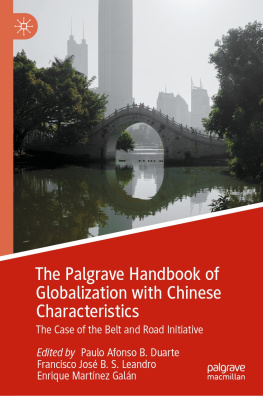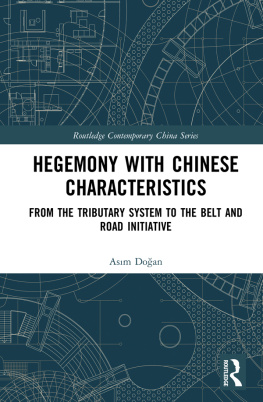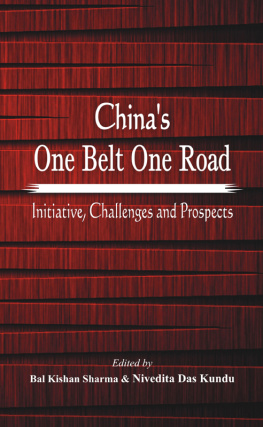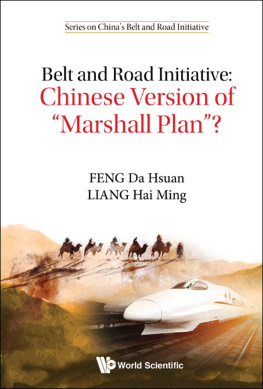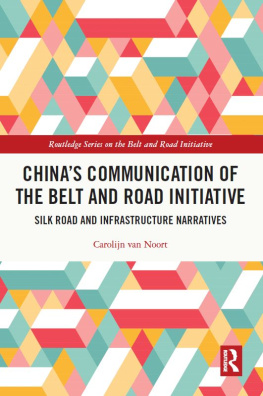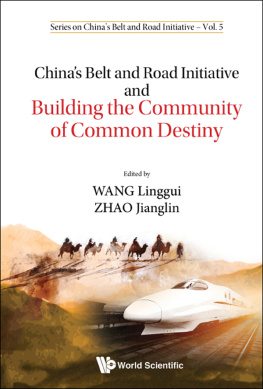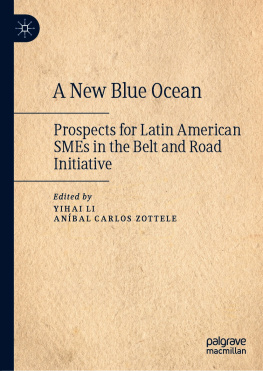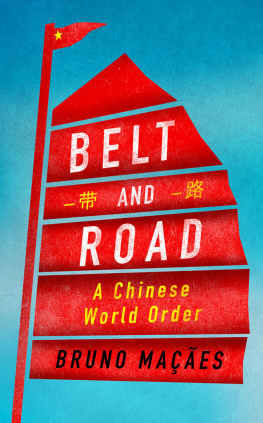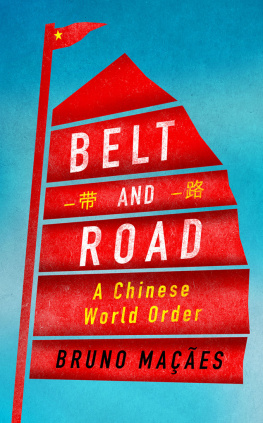Paulo Afonso B. Duarte - The Palgrave Handbook of Globalization with Chinese Characteristics: The Case of the Belt and Road Initiative
Here you can read online Paulo Afonso B. Duarte - The Palgrave Handbook of Globalization with Chinese Characteristics: The Case of the Belt and Road Initiative full text of the book (entire story) in english for free. Download pdf and epub, get meaning, cover and reviews about this ebook. year: 2023, publisher: Springer Nature Singapore, genre: Politics. Description of the work, (preface) as well as reviews are available. Best literature library LitArk.com created for fans of good reading and offers a wide selection of genres:
Romance novel
Science fiction
Adventure
Detective
Science
History
Home and family
Prose
Art
Politics
Computer
Non-fiction
Religion
Business
Children
Humor
Choose a favorite category and find really read worthwhile books. Enjoy immersion in the world of imagination, feel the emotions of the characters or learn something new for yourself, make an fascinating discovery.
- Book:The Palgrave Handbook of Globalization with Chinese Characteristics: The Case of the Belt and Road Initiative
- Author:
- Publisher:Springer Nature Singapore
- Genre:
- Year:2023
- Rating:3 / 5
- Favourites:Add to favourites
- Your mark:
- 60
- 1
- 2
- 3
- 4
- 5
The Palgrave Handbook of Globalization with Chinese Characteristics: The Case of the Belt and Road Initiative: summary, description and annotation
We offer to read an annotation, description, summary or preface (depends on what the author of the book "The Palgrave Handbook of Globalization with Chinese Characteristics: The Case of the Belt and Road Initiative" wrote himself). If you haven't found the necessary information about the book — write in the comments, we will try to find it.
Paulo Afonso B. Duarte: author's other books
Who wrote The Palgrave Handbook of Globalization with Chinese Characteristics: The Case of the Belt and Road Initiative? Find out the surname, the name of the author of the book and a list of all author's works by series.
The Palgrave Handbook of Globalization with Chinese Characteristics: The Case of the Belt and Road Initiative — read online for free the complete book (whole text) full work
Below is the text of the book, divided by pages. System saving the place of the last page read, allows you to conveniently read the book "The Palgrave Handbook of Globalization with Chinese Characteristics: The Case of the Belt and Road Initiative" online for free, without having to search again every time where you left off. Put a bookmark, and you can go to the page where you finished reading at any time.
Font size:
Interval:
Bookmark:
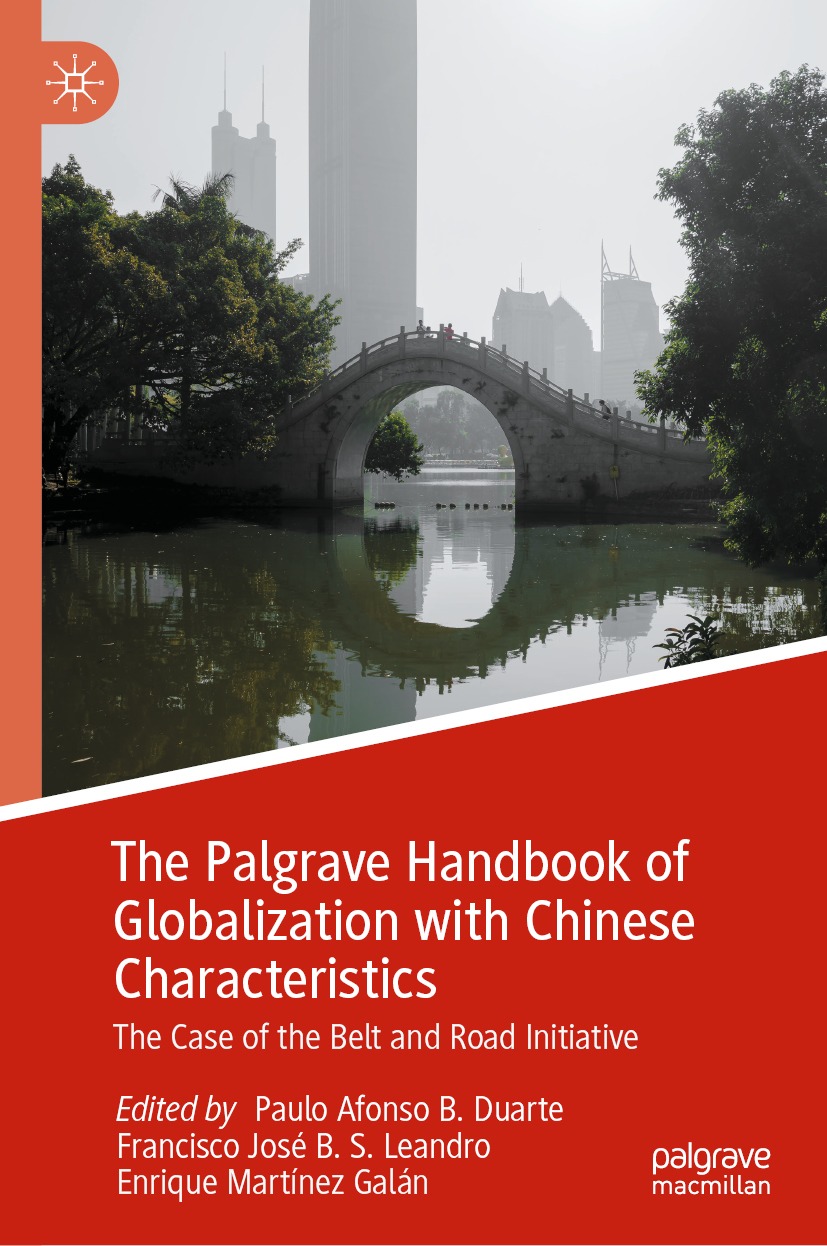

The Palgrave Macmillan logo.
Cover illustration: Architect Francisco Ricarte
This Palgrave Macmillan imprint is published by the registered company Springer Nature Singapore Pte Ltd.
The registered company address is: 152 Beach Road, #21-01/04 Gateway East, Singapore 189721, Singapore
The Belt and Road Initiative (BRI) is redefining the historical geography of contemporary capitalism. In less than a decades time, BRI has become a global project that involves more than a hundred nations worldwide in the collective creation of transnational cooperation and development. The scale, breadth, scope, and impact of BRI are unprecedented. It is therefore not surprising that the study of BRI has mushroomed. Scholarly works have appeared across multiple disciplines and languages in staggering numbers. It is time to take stock of the findings. This Handbook offers a timely review of this intellectual endeavour.
Given the extremely broad implications of BRI, research on the topic has spanned over wide-ranging issues. They include systemic concerns at the global level such as globalization, transnational connectivity, global governance, global finance, world order and multipolar contentions, globalizing discourses, and so on; regional and international relations such as multilateralism, geopolitics and national security, geo-economics and regionalism, debt trap and dependency, sovereign risk, and so on; and the impacts and responses at the domestic level including intervention and sovereign control, cross-border migration and exchanges, development strategy, sustainability, corruption, labour displacement, and so on. Many of these issues are perceptively explored in this Handbook.
Early research on BRI has mainly focused on the driving factors that prompted China to launch such a grandiose project. When the plan was first unveiled in 2013, it comprised highways, railroads, energy pipelines, and telecommunications ties that link China to Western Europe via Central Asian states, Iran, Turkey, Russia, the Caucasus, and the Balkans. At that time, the ostensible goals included enhancing connectivity through infrastructural networks, improving regional economic policy coordination, removing barriers to trade and investment, increasing financial cooperation, and encouraging cultural ties to build support for the project. Sceptics have underlined domestic problems in China, notably excess capacity and sluggish growth in its western hinterland, as the driving force behind the project. Others see the BRI as an eclectic collection of existing projects undertaken over the years by China and its allies, such as China and Pakistans economic cooperation, the various economic agendas of the Shanghai Cooperation Organization, BangladeshChinaIndiaMyanmar economic cooperation, and ChinaMongoliaRussia economic cooperation.
However, as time passes, the project rapidly expands in scale and scope. In addition to the land corridors in ChinaMongoliaRussia, ChinaPakistan, BangladeshChinaIndiaMyanmar, ChinaIndochina Peninsula, ChinaCentral and West Asia, and the New Eurasian Land Bridge, the maritime routes were added, connecting China with South Asia, Southeast Asia, the Middle East, Africa, and Europe through a strip of seaports via the South China Sea, the Indian Ocean, the Red Sea, and the Mediterranean Sea, eventually reaching to Australia and Latin America. It now encompasses over a hundred nations, and its significance has gone far beyond Chinas domestic situation. Regardless of ones analytical stand, it is undeniable that BRI has become a long-term, cross-continental, multifaceted project that is reshaping the global geo-economic landscape and world order. Research into its various dimensions, contradictions, achievements, failures, challenges, and impacts is thus imperative.
Unsurprisingly, this ambitious plan has aroused divergent views. Supporters see BRI as a new approach to promote development through multilateral cooperation and enhancement in transnational connectivity. BRI represents an alternative to the once dominated form of foreign aid and investment channelled through the World Bank and IMF, without the conditionality of market restructuring and governance reform that were often forced upon the recipient countries. Sceptics, however, caution against the economic benefits of putting heavy investments in low-return projects and high sovereign-risk countries. Critics, on the other hand, underline the huge debt burden created by large-scale infrastructural projects for host countries and warn against the potential debt trap. Many argue that BRI is in fact creating a new form of dependency. Still others believe that BRI represents Chinas counter strategy and challenge to the US-led international trade and financial system.
In addition to its broad empirical implications, BRI also bears major theoretical significance. Examples abound. From the outset, BRI is a state-initiated project aiming at enhancing cross-continental connectivity and resource flow, hence fostering interdependence of the worlds economies, cultures, and peoples. It stands as an antithesis to neoliberalism, hitherto the main driving force of globalization. As a signifier of the free-market doctrine, neoliberalism has until now been closely associated with global capitalism. However, unlike the market-driven logic of neoliberalism, BRI exhibits a number of distinctive characteristics that set it apart from this dominant form of global capitalist expansion. The first characteristic is related to the kind of investments. Unlike conventional foreign direct investments that channel to the production of specific industrial/commercial products or components under the global value chain, transborder capital flows under BRI are mostly project-driven, especially via infrastructural projects. These investments often involve not only the construction but also the subsequent operation of infrastructural projects that are meant to improve physical connectivity. Examples include the Gwadar Port and Lahore Metro in Pakistan, the East Coast Rail Link in Malaysia, the Hambantota Port in Sri Lanka, the MombasaNairobi Standard Gauge Railway in Kenya, the Piraeus Port in Greece, and the Great Stone Industrial Park in Belarus.
Font size:
Interval:
Bookmark:
Similar books «The Palgrave Handbook of Globalization with Chinese Characteristics: The Case of the Belt and Road Initiative»
Look at similar books to The Palgrave Handbook of Globalization with Chinese Characteristics: The Case of the Belt and Road Initiative. We have selected literature similar in name and meaning in the hope of providing readers with more options to find new, interesting, not yet read works.
Discussion, reviews of the book The Palgrave Handbook of Globalization with Chinese Characteristics: The Case of the Belt and Road Initiative and just readers' own opinions. Leave your comments, write what you think about the work, its meaning or the main characters. Specify what exactly you liked and what you didn't like, and why you think so.

